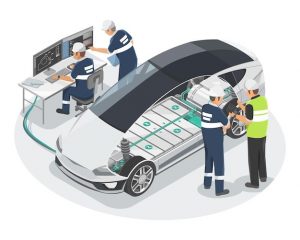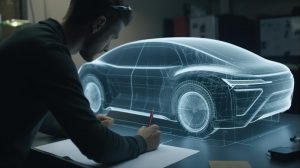The Toyota Research Institute (TRI) has made an announcement in the world of vehicle design. They have unveiled a revolutionary generative artificial intelligence (AI) technique to transform how Electric Vehicles (EVs) are designed. With this new technology, Toyota aims to overcome the constraints that often hinder the manual development of EV designs. Let’s delve deeper into this exciting breakthrough.
Also Read: Tech Mahindra CEO Accepts Sam Altman’s AI Challenge
Enhancing the Creative Process
Designers can now leverage publicly available text-to-image generative AI tools as an early step in their creative process. TRI’s innovative technique allows designers to incorporate initial design sketches and engineering constraints into this process, significantly reducing the number of iterations required to reconcile design and engineering considerations. This not only saves time but also enhances the efficiency of the design process.
Also Read: Meta Launches ‘Human-Like’ Designer AI for Images

Faster and More Efficient Designing
Implementing TRI’s new technique can potentially revolutionize the design of Electric Vehicles. By directly incorporating engineering constraints into the design process, this tool enables Toyota to design electrified vehicles more quickly and efficiently than ever. Reducing design time is a significant advantage allowing Toyota to stay at the forefront of EV innovation.
Also Read: zPod, India’s First AI-Driven Autonomous Vehicle
Optimizing Performance Metrics
One crucial aspect of EV design is the optimization of performance metrics. For instance, reducing drag is vital to improving the aerodynamics of Battery Electric Vehicles (BEVs) and maximizing their range. The new AI technique developed by TRI takes these performance metrics into account. Toyota Motor Corporation’s BEV factory president, Takero Kato, emphasizes the importance of reducing drag to improve the efficiency of BEVs. This new technology allows Toyota to optimize performance metrics such as drag, ride height, and cabin dimensions.

Merging Engineering and AI
Traditionally, generative AI tools have been used as sources of inspiration for designers. However, they cannot often handle the complex engineering and safety considerations involved in actual car design. Avinash Balachandran, director of TRI’s Human Interactive Driving (HID) Division, highlights the significance of merging Toyota’s engineering expertise with modern generative AI capabilities. This integration allows for the best of both worlds, providing designers with advanced tools while ensuring that engineering and safety are not compromised.
Also Read: Mercedes-Benz Cars Get Even Smarter with ChatGPT

Incorporating Engineering Constraints
TRI researchers have released two papers outlining how the new technique incorporates precise engineering constraints into the design process. Key constraints such as drag, which affects fuel efficiency, and chassis dimensions like ride height and cabin dimensions, which impact handling, ergonomics, and safety, can now be implicitly integrated into the generative AI process. This breakthrough opens up endless possibilities for designing vehicles that are not only aesthetically pleasing but also highly functional.
Also Read: Drive Into the Future with Jeep’s Next-Gen AI & Autonomous Off-Road Driving Tech
The Fusion of Optimization Theory and Generative AI
The team at TRI has combined principles from optimization theory, widely used in computer-aided engineering, with text-to-image-based generative AI. The resulting algorithm allows designers to optimize engineering constraints while retaining their text-based stylistic prompts for the generative AI process. This seamless fusion of optimization theory and generative AI empowers designers to balance form and function in their designs.
Learn More: Join us for an extraordinary learning experience! Unlock the boundless world of Generative AI with Diffusion Models at our upcoming workshop at the DataHack Summit 2023.
A Designer’s Dream
Imagine a designer being able to request a suite of designs based on an initial prototype sketch while specifying stylistic properties such as “sleek,” “SUV-like,” and “modern.” This new AI technique makes such dreams a reality. Designers can now optimize quantitative performance metrics, such as aerodynamic drag, while maintaining their desired stylistic elements. The research paper from TRI primarily focuses on aerodynamic drag, but the approach can be applied to optimize other performance metrics or constraints inferred from a design image.

Our Say
TRI’s latest AI technique is a testament to its commitment to harnessing the creative power of AI to amplify the skills of automobile designers and engineers. This breakthrough enables faster and more efficient design of EVs and ensures that engineering constraints are seamlessly integrated into the design process. Toyota continues to push the boundaries of innovation, cementing its position as a leader in Electric Vehicles.




